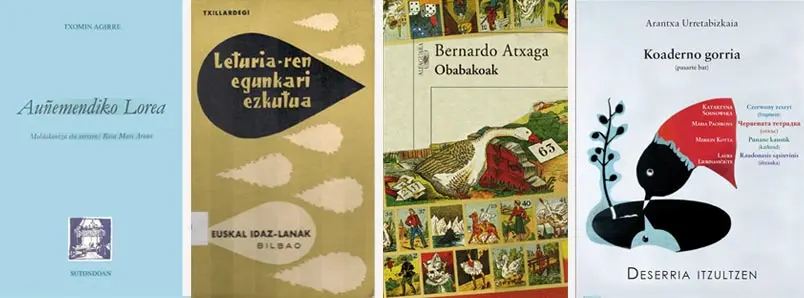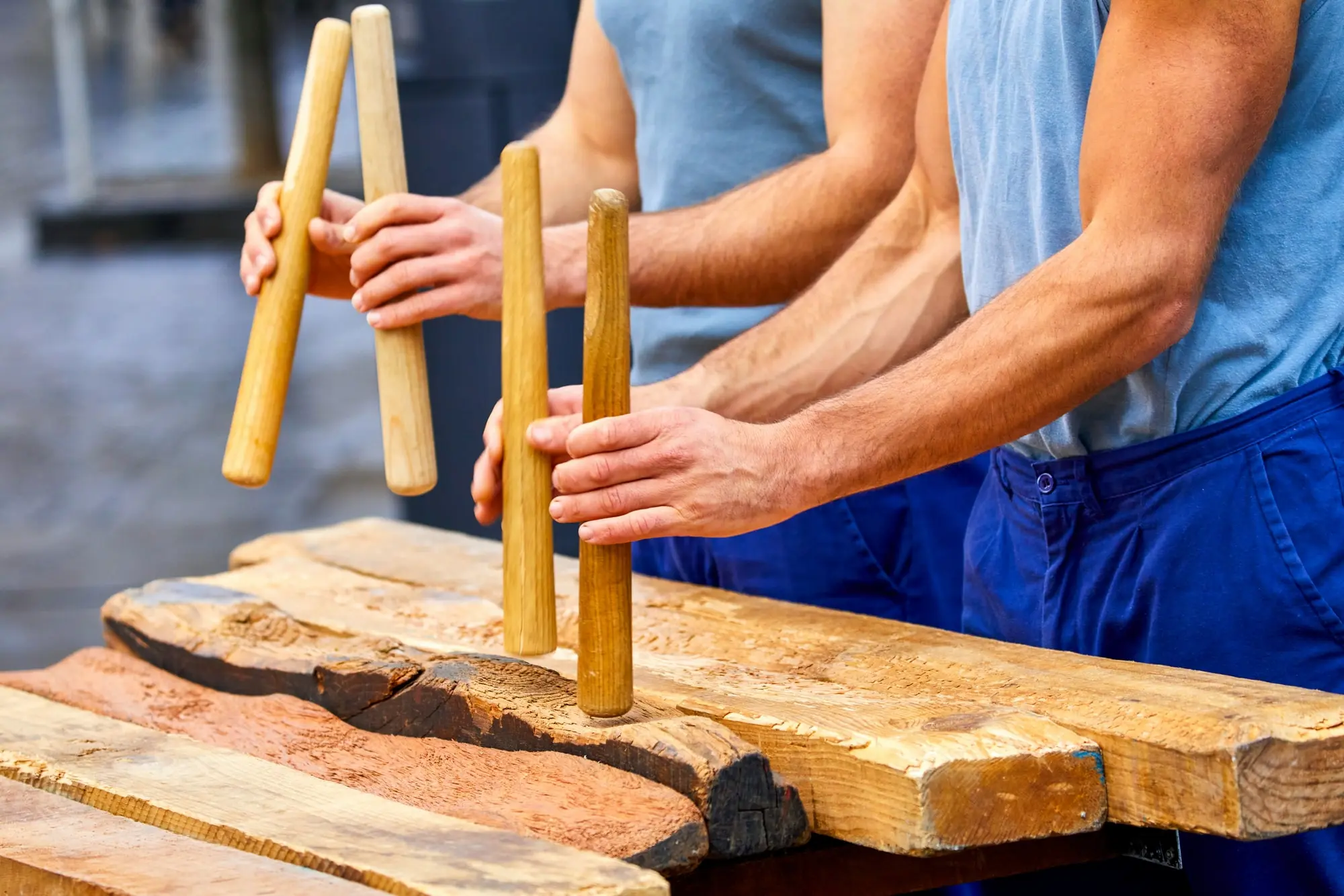Euskera, basque culture
Euskera, intangible heritage
What is it that makes Euskera so special? To start with, it’s the oldest language in Europe! It’s so old that not even those who have researched it know its origin. It’s one of the few languages in the world that’s not related to any other.
Europe's oldest language
Euskera is spoken on both sides of the Western Pyrenees, in other words, in different areas of France and Spain. In Donostia/San Sebastián, like the rest of the Basque Autonomous Community, the official languages are Euskera and Spanish.
3000 years ago it was surrounded by non-Indo-European languages. These languages gradually disappeared and, for the first millennium AD, Indo-European languages dominated in almost all of Europe. Nevertheless, Euskera didn’t disappear, and has survived to the present day!
3000 years ago it was surrounded by non-Indo-European languages. These languages gradually disappeared and, for the first millennium AD, Indo-European languages dominated in almost all of Europe. Nevertheless, Euskera didn’t disappear, and has survived to the present day!
More and more ‘Euskaldunes’
Nowadays, around 1,000,000 people speak Euskera and a further 500,000 people are able to understand the language. Gipuzkoa is the region with the highest number of bilingual people: 57.37% of people are ‘Euskaldun’, and another 15.90% are able to understand it. Donostia in particular is the municipality with the most bilingual people, as 81,274 Donostiarras are fluent in Euskera.
Put yourself to the test in the Gymkana!
A fun way learn about the history of Donostia, its mysteries and its ancient language, Euskera! Are you game? Click on the button or scan the QR code with your phone.
Euskera recovery process
In recent years, the number of bilingual people has increased considerably and, with a view to the future, it’s expected to grow even more. Thanks to the educational system, children and young people are learning it.
In the last 35 years the number of ‘Euskaldunes’ has increased by more than 300,000 people in the Basque Autonomous Community. In addition, it has achieved its place in spaces where in the past it wasn’t used or was banned: the administration, education, the media, etc.
The Euskera recovery process has become an international benchmark for other processes to recover other languages. Today, with the will of the people, the legal protection and the linguistic policies in its favour in the Basque Autonomous Community, Euskera has made considerable progress in this process.
When you walk along the streets of Donostia, look at the posters and signs. Which of the two languages is Euskera? Do you want to know how it’s pronounced? We’ve compiled a short dictionary so you can greet people or order pintxos just like the Donostiarras!
In the last 35 years the number of ‘Euskaldunes’ has increased by more than 300,000 people in the Basque Autonomous Community. In addition, it has achieved its place in spaces where in the past it wasn’t used or was banned: the administration, education, the media, etc.
The Euskera recovery process has become an international benchmark for other processes to recover other languages. Today, with the will of the people, the legal protection and the linguistic policies in its favour in the Basque Autonomous Community, Euskera has made considerable progress in this process.
When you walk along the streets of Donostia, look at the posters and signs. Which of the two languages is Euskera? Do you want to know how it’s pronounced? We’ve compiled a short dictionary so you can greet people or order pintxos just like the Donostiarras!
A unique, original culture
Herri kirolak – Rural sports
‘Herri Kirolak’ is the term used for the set of sports that are traditionally practiced in the Basque countryside. Most of these sports evolved from countryside work activities, which gradually became popular sports over the years.
For example, the task of chopping logs for firewood became the sport of ‘aizkolaris’ and the activity of moving large rocks for construction led to rock lifting (the sportspeople in this discipline are known as harrijasotzaileak) or dragging rocks with bulls (idi probak). And of course, we mustn’t forget the famous ‘pelota’!
In addition to these sports practiced inland, coastal areas such as Donostia have seen a proliferation centuries-old trainera regattas, one of the most striking spectacles of the Cantabrian Sea. In our city, and in our waters, we celebrate the famous Bandera de la Concha, the most important trainera competition in the country.
For example, the task of chopping logs for firewood became the sport of ‘aizkolaris’ and the activity of moving large rocks for construction led to rock lifting (the sportspeople in this discipline are known as harrijasotzaileak) or dragging rocks with bulls (idi probak). And of course, we mustn’t forget the famous ‘pelota’!
In addition to these sports practiced inland, coastal areas such as Donostia have seen a proliferation centuries-old trainera regattas, one of the most striking spectacles of the Cantabrian Sea. In our city, and in our waters, we celebrate the famous Bandera de la Concha, the most important trainera competition in the country.
Euskal dantzak – Basque dances
Dance has, as in many another cultures, played a very important part in the social and religious life of Euskal Herria. Many of the dances that are still danced today in festivals have been seen consistently for more than 400 years. Today there are an infinite number of popular dances, and each public celebration and fiesta usually its own dance.
Bertsolariak
‘Bertsolarism’ is one of the most peculiar disciplines of Basque culture. The ‘bertso’ consists of improvising sung verses, with a set rhyme and melody. This requires a good dose of imagination, vocal dexterity and mental agility. Even today, ‘bertsolaris’ championships are organised throughout the region, especially as part of festivals, at cider cellars, etc. There are even specific schools that have produced new generations of ‘bertsolaris’ who have achieved major popularity.
Euskal musika – Basque Music
For the last 15 years or so, one of the main features of Basque songs has been their diversity, as you can find pretty much any style sung in Euskera. Over the last five decades, our folk, pop and rock music has covered nearly everything: in its lyrics, to make social and political statements, in fun and in commitment, to recover old traditions and create new ones…
Euskal zinema – Basque Cinema
The evolution of the Basque film industry has been late and modest. It wasn’t until the years of the Second Republic that the first work with a genuine, conscious spirit of nationalism was filmed. Nowadays, Basque cinema has gained prestige and fame both here and abroad, and we can now say that Basque cinema is seeing a new and successful generation.
Euskal literatura – Basque Literature
Despite its beginnings linked to the church and religious education, since the 19th century literature in Euskera has changed direction and begun to include other genres such as the novel. These important works opened the door to another type of trend, although it wasn’t until the mid 20th century that Basque literature became an autonomous activity within Basque society.

